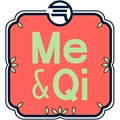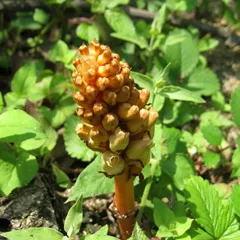Phlegm
The information provided here is not a replacement for a doctor. You shouldn't use it for the purpose of self-diagnosing or self-medicating but rather so you can have a more informed discussion with a professional TCM practitioner.
At a glance
Preliminary reading: What is a pattern? The concept of Body Fluid
Key attributes
Chinese name: 痰 Pinyin name: Tán
Pattern nature: Full
Pattern hierarchy: General pattern with specific forms like Phlegm Misting the Heart or Phlegm-Fire harassing the Heart
Common combinations: Heart Vessel obstructed Phlegm-Fluids
Causes
Precursor patterns: Damp-Heat in the Liver Spleen Yang Deficiency Stomach Qi Deficiency and fifteen other possible precursors
Common causes: 1. Emotional stress, 2. External environments, 3. Diet
Diagnosis
Common symptoms: Dizziness Muzziness of the head Feeling of oppression of the chest
Pulse type(s): Slippery (Hua), Wiry (Xian)
Tongue description: swollen tongue with sticky coating
Treatment
Treatment principle: Remove Phlegm, tonify the Spleen, Kidneys and Lungs
Common formulas: Er Chen Tang Liu Jun Zi Tang Ban Xia Bai Zhu Tian Ma Tang and three other formulas
Pathology
Phlegm has a great importance in Chinese Medicine as it is both a condition in and of itself as well as a cause for other diseases.
The main cause for the formation of Phlegm is Spleen Deficiency since the Spleen rules the transformation and transportation of Body Fluids. If this function is impaired, Body Fluids accumulates and change into Phlegm.
The Lungs and Kidneys may also be involved since they each play a role in handling body Fluids: the Lungs disperse and descend Body Fluids while the Kidneys transform and excrete them. Again, if they fail to perform those roles, Body Fluids will accumulate and become Phlegm.
That being said, the Spleen malfunction is the fundamental reason behind the formation of Phlegm and, as such, treatments will focus on it first and foremost.
There are two broad types of Phlegm: so-called "Substantial Phlegm" and "Non-Substantial Phlegm". Simply put, Substantial Phlegm can be seen, such as sputum in the Lungs and throat. Non-Substantial Phlegm is more hidden and will manifest itself into, for instance, kidney stones, gallstones or arthritic bone deformities.
Phlegm can accumulate and settle down in different parts of the body and lead to corresponding symptoms. For example, if it stays in the joints, muscles and Channels, there are muscle numbness, bone deformities and etc. If it mists the Heart, it causes many mental illness. If it settles in the Gall Bladder or Kidney, it leads to stones in these Organs.
Phlegm can further be categorized according to its nature: there is Damp-Phlegm, Phlegm-Heat, Cold-Phlegm, Wind-Phlegm, Qi-Phlegm, Phlegm-Fluids and etc.
"Phlegm-Fluids" is very similar to Dampness and is very watery and thin. It can be heard splashing in the body, found usually in the Stomach and Small Intestines, hypochondrium, limbs or above the diaphragm.
Causes
Precursor patterns: Phlegm can derive from Damp-Heat in the Liver Spleen Yang Deficiency Stomach Qi Deficiency Heart Blood Stagnation Spleen Qi Sinking Stomach Yang Deficient and Cold Stomach Qi Stagnation Spleen Blood Deficiency Spleen not controlling Blood Damp-Heat invading the Spleen Spleen and Lung Qi Deficiency Obstruction Of the Spleen By Dampness with Liver Qi Stagnation Pericardium Blood Stagnation Liver Fire insulting the Lungs Kidneys failing to receive Qi Kidney and Spleen Yang Deficiency Damp-Heat in the Stomach Food Stagnation in the Stomach
Emotional stress : Emotional stress can damage the Qi movement functions of the Lungs, Spleen and Kidneys. Therefore they are not able to circulate Body Fluids and accumulate Phlegm.
External environments : External Wind, Cold, Heat, Fire and Summer Heat and Dampness can invade body and give rise to the formation of Phlegm.
Diet : Excessive intake of fried or greasy foods such as deep-fried foods, milk, cheese, butter, avocados, nuts and nut butter, chips and fried foods produce Dampness and obstruct the Spleen function. This leads to Phlegm, which causes symptoms such as sinusitis, nasal discharge, heavy and fuzzy feeling in the head, dull headaches and etc.
Diagnosing Phlegm
Diagnosing a pattern in Chinese Medicine is no easy feat and should be left to professional practitioners. In particular one has to know how to differentiate between different types of pulses and tongue coatings, shapes and colors as well as learn to read from a long list of seemingly unrelated symptoms.
Pulse type(s): Slippery (Hua) or wiry (Xian)
Tongue description: swollen tongue with sticky coating
Main symptoms: Dizziness Muzziness of the head Feeling of oppression of the chest
Diagnosis commentary: Key characteristic symptoms of this pattern are the general feeling of oppression and heaviness, dizziness and lumps.
Treating Phlegm
Treatment principle
Remove Phlegm, tonify the Spleen, Kidneys and Lungs
Herbal formulas used to treat Phlegm
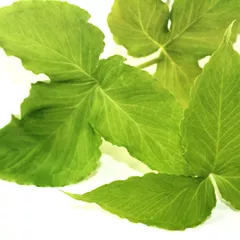

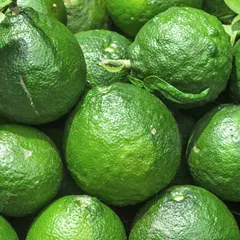
The top herbs in Wen Dan Tang are Crow-Dipper Rhizomes (Ban Xia), Bamboo Shavings (Zhu Ru) and Immature Bitter Oranges (Zhi Shi)
Wen Dan Tang
Source date: 1174 AD
Number of ingredients: 8 herbs
Key actions: Clears Phlegm. Clears Gallbladder. Regulates Qi. Harmonizes the Stomach.
Formula summary
Wen Dan Tang is a 8-ingredient Chinese Medicine formula. Invented in 1174 AD, it belongs to the category of formulas that dry Dampness and transform Phlegm.
Besides Phlegm, Wen Dan Tang is also used to treat Phlegm Misting the Heart or Gallbladder Deficiency.

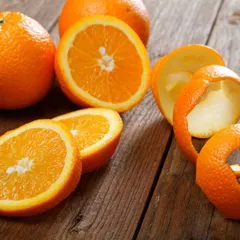
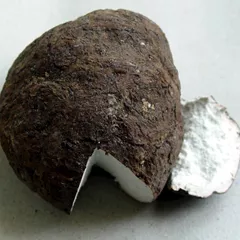
The top herbs in Er Chen Tang are Crow-Dipper Rhizomes (Ban Xia), Tangerine Peel (Chen Pi) and Poria-Cocos Mushrooms (Fu Ling)
Er Chen Tang
Source date: 1148 AD
Number of ingredients: 5 herbs
Key actions: Dries Damp and dispels Phlegm. Regulates Qi and harmonizes the Middle Burner (Stomach and Spleen).
Formula summary
Er Chen Tang is a 5-ingredient Chinese Medicine formula. Invented in 1148 AD, it belongs to the category of formulas that dry Dampness and transform Phlegm.
Besides Phlegm, Er Chen Tang is also used to treat Damp-Phlegm in the Lungs or Damp-Phlegm.
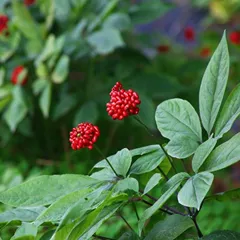
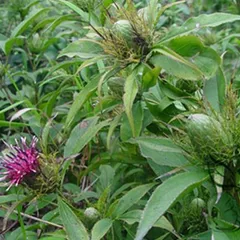

The top herbs in Liu Jun Zi Tang are Ginseng (Ren Shen), Atractylodes Rhizomes (Bai Zhu) and Tangerine Peel (Chen Pi)
Liu Jun Zi Tang
Source date: 1107
Number of ingredients: 6 herbs
Key actions: Tonifies Qi. Strengthens the Spleen and Stomach. Clears Phlegm and mucus. Promotes appetite.
Formula summary
Liu Jun Zi Tang is a 6-ingredient Chinese Medicine formula. Invented in 1107, it belongs to the category of formulas that tonify Qi.
Besides Phlegm, Liu Jun Zi Tang is also used to treat Qi Deficiency or Spleen and Lung Qi Deficiency.

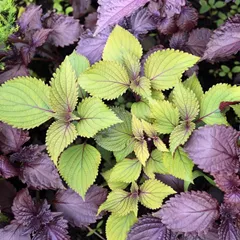
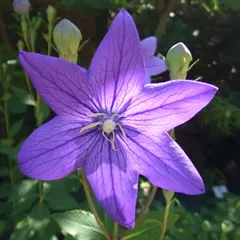
The top herbs in Xing Su San are Apricot Seeds (Xing Ren), Perilla Leaves (Zi Su Ye) and Platycodon Roots (Jie Geng)
Xing Su San
Source date: 1798 AD
Number of ingredients: 11 herbs
Key actions: Clears Dry-Cold. Disseminates the Lung Qi and relieves cough. Transforms thin mucus.
Formula summary
Xing Su San is a 11-ingredient Chinese Medicine formula. Invented in 1798 AD, it belongs to the category of formulas that disperse Dryness and moisten.
Besides Phlegm, Xing Su San is also used to treat Body Fluids Deficiency or Dry-Heat or Dry-Fire.
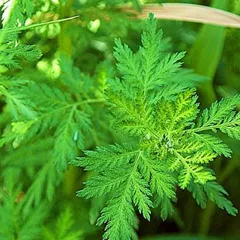
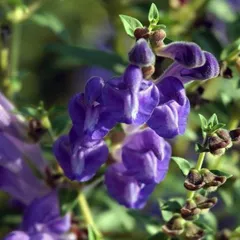

The top herbs in Hao Qin Qing Dan Tang are Sweet Wormwood Herbs (Qing Hao), Baikal Skullcap Roots (Huang Qin) and Bamboo Shavings (Zhu Ru)
Hao Qin Qing Dan Tang
Source date: Qing Dynasty
Number of ingredients: 10 herbs
Key actions: Clears Heat and relieves acute conditions of the Gallbladder. Relieves acute Damp-Heat syndromes. Resolves Phlegm. Harmonizes the Stomach.
Formula summary
Hao Qin Qing Dan Tang is a 10-ingredient Chinese Medicine formula. Invented in Qing Dynasty, it belongs to the category of formulas that harmonize lesser Yang-warp disorders.
Besides Phlegm, Hao Qin Qing Dan Tang is also used to treat Gallbladder Heat or Heat in Gall Bladder.
Ban Xia Bai Zhu Tian Ma Tang
Source date: 1732 AD
Number of ingredients: 8 herbs
Key actions: Dries and dissolves Phlegm. Strengthens the Spleen. Smoothes the Liver and calms Liver Wind (antispasmodic).
Formula summary
Ban Xia Bai Zhu Tian Ma Tang is a 8-ingredient Chinese Medicine formula. Invented in 1732 AD, it belongs to the category of formulas that transform Phlegm and extinguish Wind.
Besides Phlegm, Ban Xia Bai Zhu Tian Ma Tang is also used to treat Wind-Phlegm.
Diet recommendations
Avoid fried or greasy foods such as deep-fried foods, milk, cheese, butter, avocados, nuts and nut butter, chips and fried foods. It is because they cause Dampness and harm the Spleen function.
Related conditions
Please keep in mind that a Western Medicine condition can be caused by several Chinese Medicine patterns of disharmony and vice versa. As such a patient suffering from one of the conditions below will not necessarily be suffering from Phlegm, it is just one pattern that's commonly associated with the condition. Click on a condition to learn what other patterns it's associated with.
Morning sickness Menopausal syndrome Low breast milk supply Hepatitis Cystitis Migraine Trigeminal neuralgia Conjunctivitis Pyelonephritis Edema Glomerulonephritis Nephrotic syndrome Hydrocele Motion sickness Meniere's disease Gastrectasis Acute enteritis Ascites Congestive heart failure Pericardial and pleural effusions Hydrocephalus Polyhydramnios
Special highlight: the link between low breast milk supply and Phlegm

Coco-Grass Rhizomes (Xiang Fu) is the key herb for Cang Fu Dao Tan Wan, a formula used for low breast milk supply caused by Phlegm
Typical symptoms for low breast milk supply caused by Phlegm: Fatigue Overweight Bad breath Watery milk Low metabolism Thick tongue coating No feeling of distension of the breasts
Recommended herbal formulas: Milk Boost Tea, Cang Fu Dao Tan Wan
The main cause for the formation of Phlegm is Spleen Deficiency since the Spleen rules the transformation and transportation of Body Fluids. If the Spleen doesn't transform or transport Body Fluids they will accumulate and change into Phlegm, which often stay in the Spleen and Stomach.
The accumulated Phlegm then impairs the Stomach's function of ripening and rotting food as well as the Spleen's function of transforming and absorbing food. This leads to a situation where those Organs do not...Read more about low breast milk supply
Special highlight: the link between menopausal syndrome and Phlegm

Atractylodes Rhizomes (Bai Zhu) is the key herb for Yue Ju Wan, a formula used for menopausal syndrome caused by Phlegm
Typical symptoms for menopausal syndrome caused by Phlegm: Nausea Oedema Obesity Belching Moodiness Depression Irritability Poor appetite Chest fullness Breast distention Abdominal fullness Sputum in the chest
Recommended herbal formulas: Yue Ju Wan, Wen Dan Tang, Ban Xia Hou Pu Tang
This pattern often appears among young women with premature menopause. The symptoms are due to Phlegm or Dampness accumulating in the Lower Burner instead of the more typical decline of Kidneys Essence, normally the key cause for menopausal syndrome. As for absence of menstruation, Spleen Qi Deficiency is the fundamental reason leading to Phlegm. This is because the Spleen rules the transformation and transportation of Body Fluids. The malfunction of this Organ leads to the accumulation of...Read more about menopausal syndrome
Consequence patterns
Phlegm, regardless of its association with Dampness, Cold or Heat, is a form of condensed Body Fluids and it can give rise to Dryness if it lasts for a long period of time.
Phlegm does not lead to Blood Stagnation directly, but in a supportive way.
Phlegm can cause Blood Stagnation. Since one of the Liver's major responsibility is to store Blood. Therefore, general Blood Stagnation can cause Liver Blood Stagnation.
